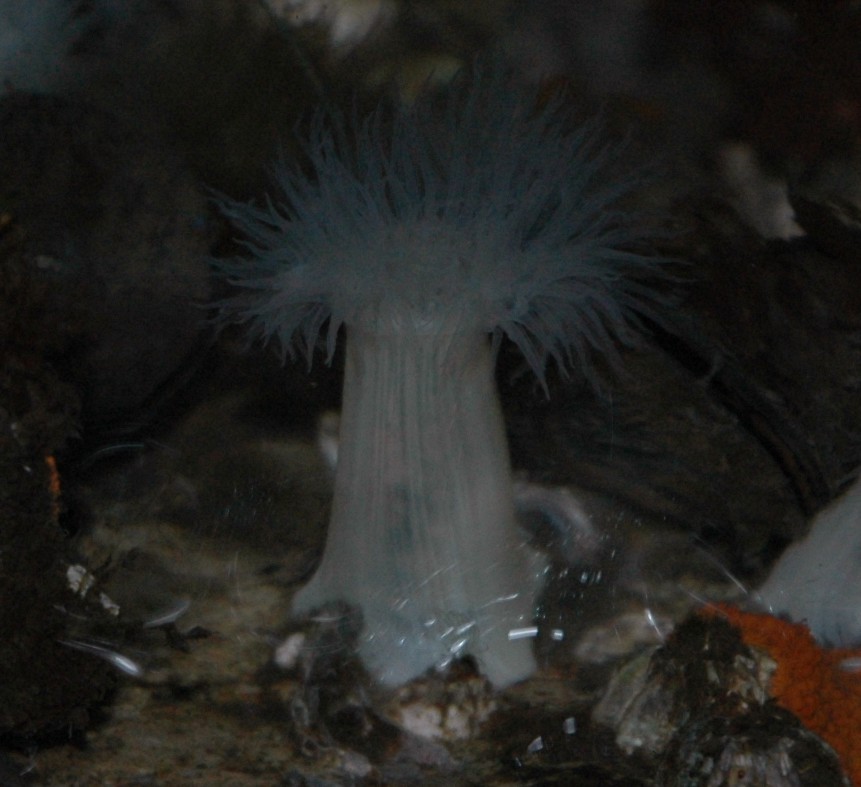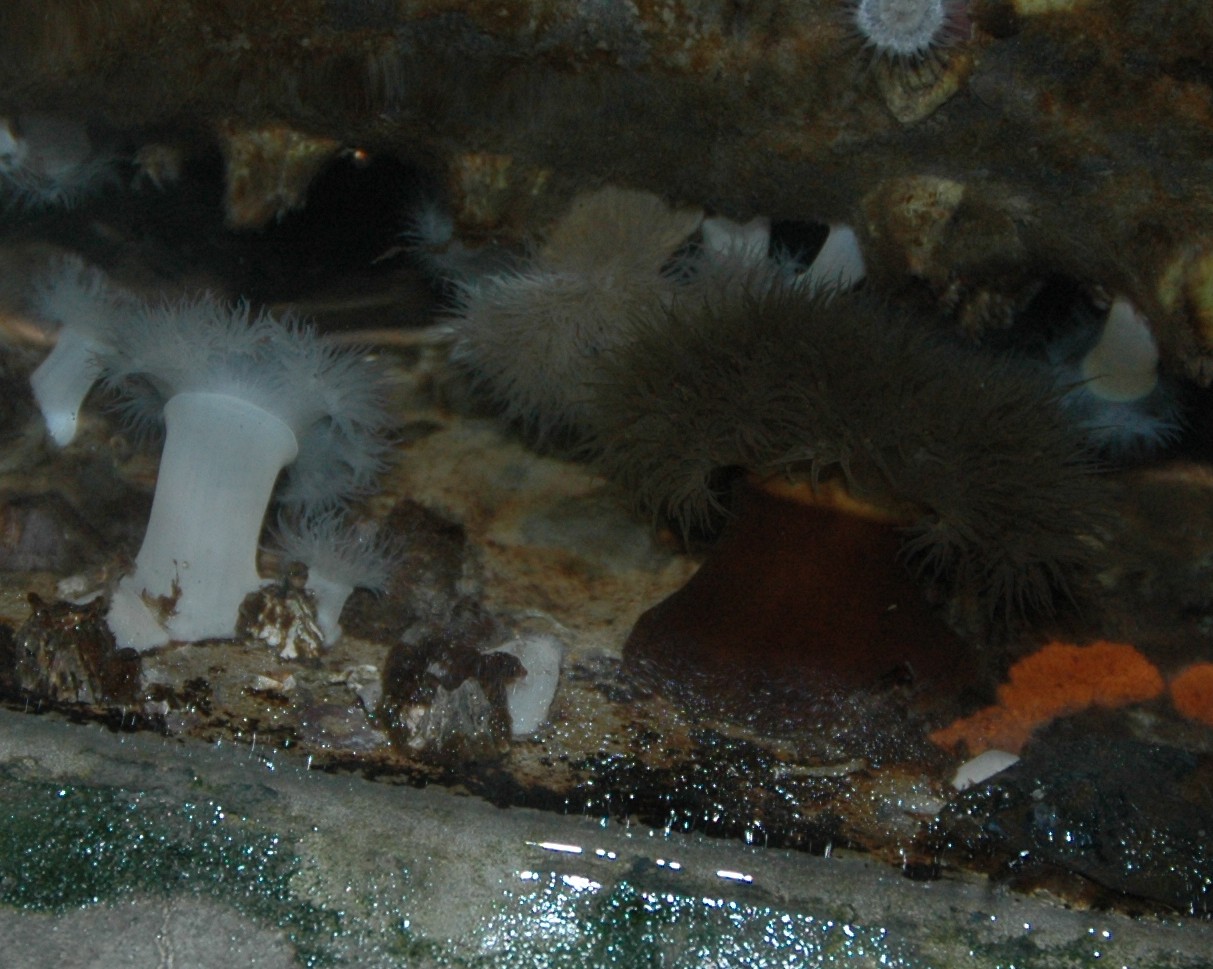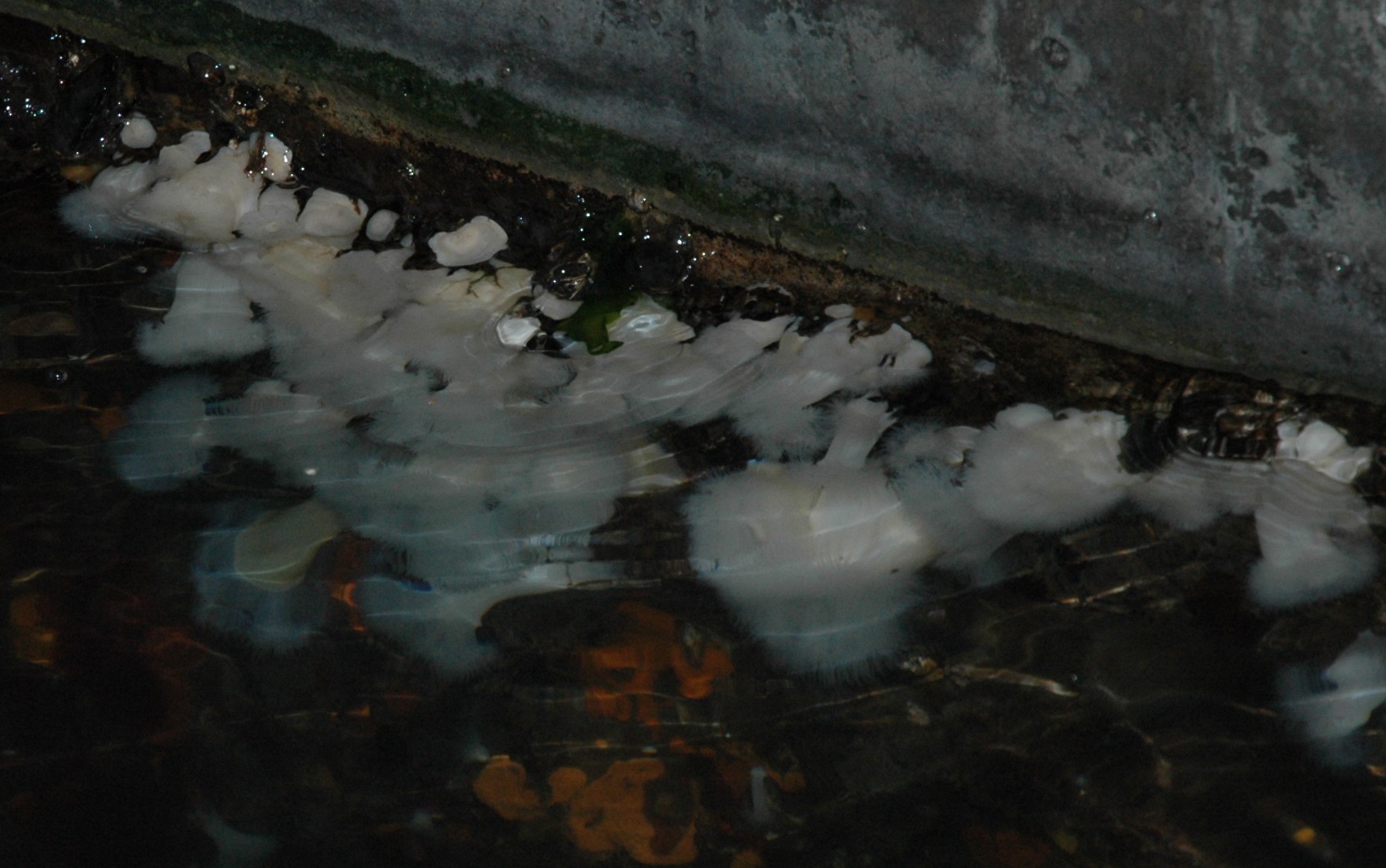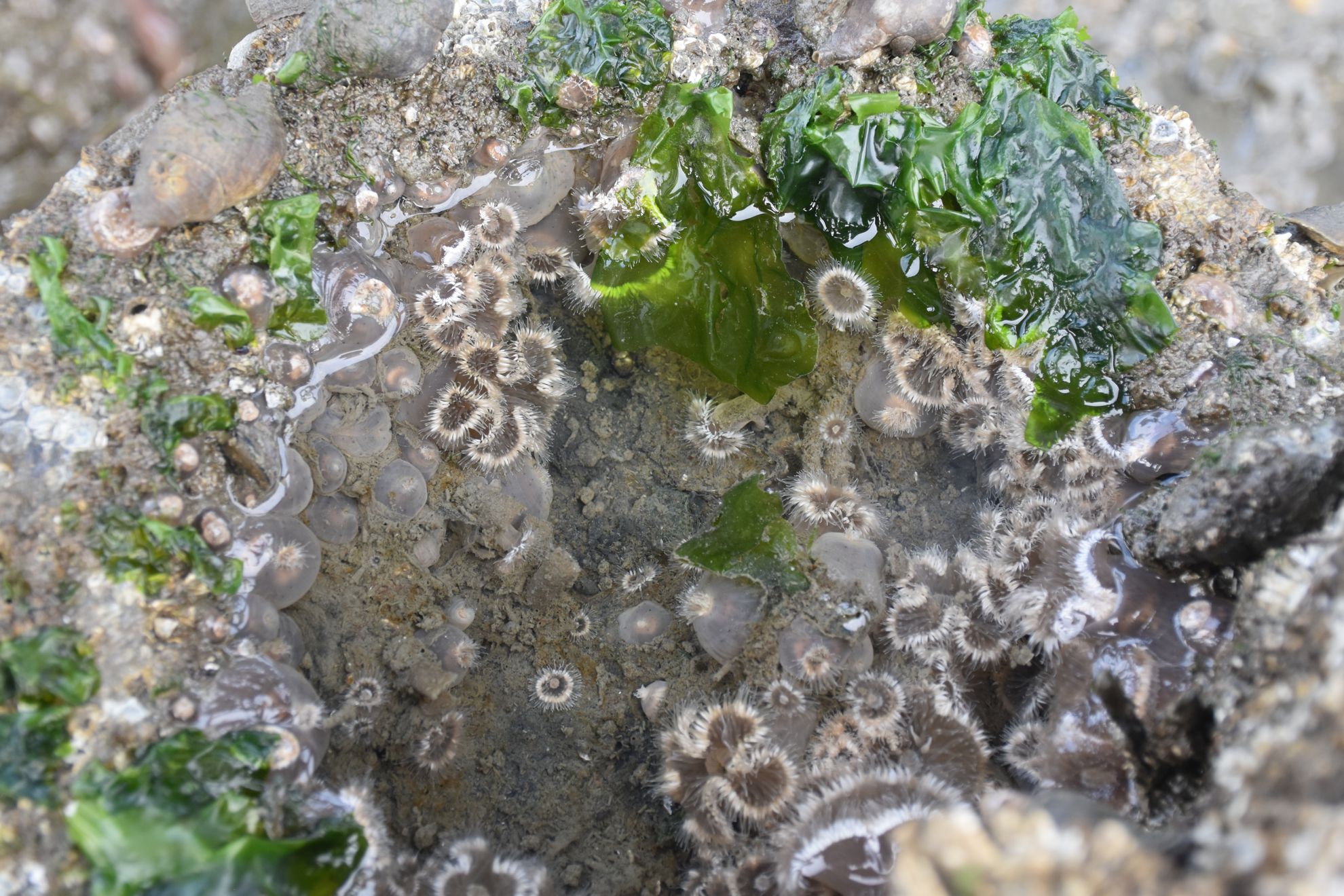Metridium senile subsp. fimbriatum (Verrill, 1865) [Harbo, 1999 says Linnaeus, 1767]Common name(s): Plumose anemone, Short plumose anemone, White plume anemone, Sun anemone, Frilled anemone, Fluffy anemone |
|
| Synonyms: Metridium dianthus |  |
| Phylum Cnidaria
Class Anthozoa Subclass Zoantharia Order Actiniaria Family Metridiidae |
|
| Metridium senile among mussels on dock in Anacortes. Height approx. 7 cm, diameter 4 cm | |
| (Photo by: Dave Cowles, Nov 2005) | |
How to Distinguish from Similar Species: Metridium farcimen is similar color and form, but grows much larger, has over 200 tentacles, and a deeply lobed oral disk. Metridium exilis lives under rocks or ledges on the open coast in California, and grows to only 1.8 cm tall.
Geographical Range: Circumpolar (Alaska to California in the East Pacific, at least as far south as Santa Catalina Island, CA). This species (but not necessarily subspecies fimbriatum) is found from New Jersey to Labrador on the Atlantic coast, and occurs in Europe and the Mediterranean as well.
Depth Range: Intertidal to 30 m
Habitat: Rocks, shells, floating docks, pilings; especially in bays. Occasionally found on the carapace and claws of kelp crabs.
Biology/Natural History: All of the American Pacific Coast population is regarded as subspecies fimbriatum. This species is often found aggregating together. They often reproduce asexually by pedal laceration, and are said to be capable of binary fission as well. Sexual reproduction also occurs. This species will fire its acontia when placed in contact with Anthopleura elegantissima, the green aggregating anemone. Animals on the border of a clone often develop up to 19 "catch tentacles", which generally occur close to the mouth. These tentacles, which are lerger and more opaque than the other tentacles, have special nematocysts and are unusually extensible (they can become up to 12 cm long or more). They probe the area around the anemone. While they do not respond to food, they do fire when they contact either A. elegantissima or another clone of M. senile. When it fires, the tip of the tentacle breaks off and sticks to the victim, which may retract and bend away. Tissue damage can generally later be seen in the stung area, and the attacked individual may even die. The acontia do not sting the skin but could definitely sting the eyes or tongue.
Sperm in this species have wedge-shaped heads. Eggs are pink and about 0.1 mm diameter. Fertilization is external, and release of sperm into the water triggers release of eggs from females nearby. In California peak spawning is in August and September.
Diet is mostly small zooplankton, though they may also eat small benthic polychaetes, fish, and squid. A substantial portion of their carbon comes from kelp. so this must also compose a substantial part of their diet. Ricketts et al., 1985 mention observing one digest a chiton in 15 minutes. It can survive in brackish water, such as in San Francisco Bay. Predators include the nudibranchs Aeolidia papillosa and Aeolidia loui and the seastars Hippasteria spinosa and Dermasterias imbricata, which can eat even quite large individuals. Attacked individuals may detach and drift to a new location. In Alaska, young king crabs (Paralithodes camtshaticus) often nestle among these anemones.
The reason for the brown coloration in some individuals
is unclear,
but Westholt et al., (2001) discovered that when M.
senile were exposed to UV radiation long-term they turned
brown.
| Return to: | |||
| Main Page | Alphabetic Index | Systematic Index | Glossary |
References: Note: References older than 1989 do not distinguish between M. senile and M. giganteum.
Dichotomous Keys:Kozloff 1987, 1996
Smith and Carlton, 1975
General References:
Brusca
and Brusca, 1978
Gotshall,
1994
Gotshall
and Laurent, 1979
Harbo,
1999
Johnson
and Snook, 1955 (as Metridium dianthus)
Kozloff,
1993
McConnaughey
and McConnaughey, 1985
Morris
et al., 1980
Niesen,
1994
Niesen,
1997
O'Clair
and O'Clair, 1998
Ricketts
et al., 1985
Sept,
1999
Scientific
Articles:
Fautin, D.G., A. Bucklin, and C. Hand, 1989. Systematics of
sea
anemones belonging to the genus Metridium
(Coelenterata: Actiniaria),
with a description of M. giganteum, new
species. Wasmann J.
Biol. 47: 77-85
Westholt, R., P. Kestler, O. Sicken, and W. Westheide, 2001. Effects of long-term ultraviolet radiation: the white form of Metridium senile (Anthozoa: Actiniaria) as a potential biological indicator for ultraviolet. Helgoland Marine Research 55: pp 87-93
Web sites:
General Notes and Observations: Locations, abundances, unusual behaviors:

Several white individuals and one brown individual of Metridium
senile are seen on this float, Anacortes, WA. Photo
by Dave Cowles,
November 2005

A tightly aggregated clone of Metridium senile are
seen on this
dock in Anacortes. Photo by Dave Cowles, November
2005

Here is a group of Metridium
senile in a pool created within a rotting, cut-off
intertidal piling post in Fidalgo Bay. Photo by Dave Cowles, August 2025
Authors and Editors of Page:
Dave Cowles (2005): Created original page